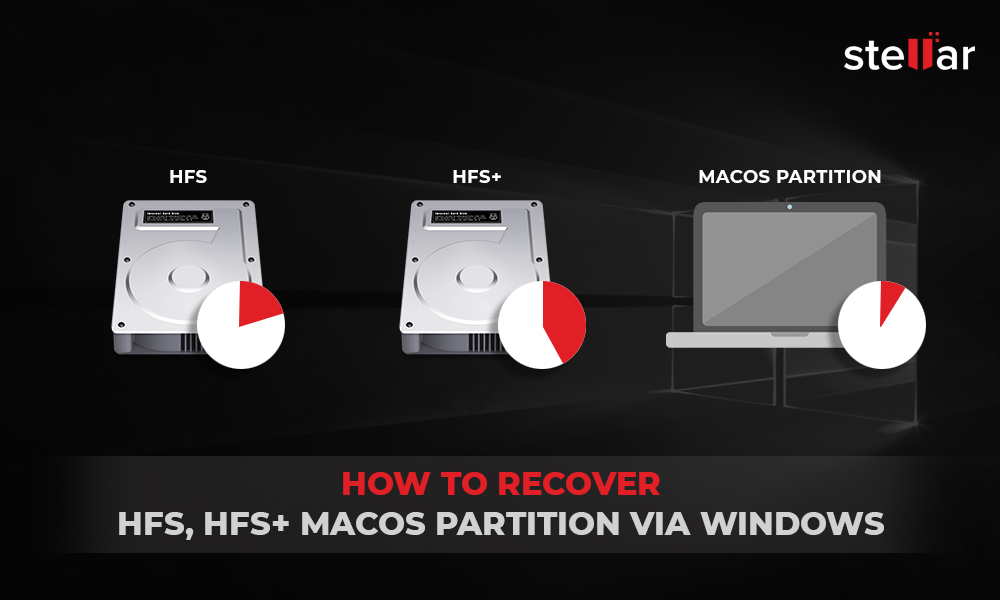
- #MACBOOK NOT HFS FILE SYSTEM FOR MAC#
- #MACBOOK NOT HFS FILE SYSTEM MAC OS X#
- #MACBOOK NOT HFS FILE SYSTEM SOFTWARE#
Oddly, one of the few places this 'upsizing' did not take place was the file directory itself, which limits HFS to a total of 65,535 files on each logical disk. HFS also redesigned various structures to be able to hold larger numbers, 16-bit integers being replaced by 32-bit almost universally. HFS replaced the flat table structure with the Catalog File which uses a B-tree structure that could be searched very quickly regardless of size. The solution was to replace MFS's directory structure with one more suitable to larger file systems. This worked well with a system with a few hundred kilobytes of storage and perhaps a hundred files, but as the systems grew into megabytes and thousands of files, the performance degraded rapidly. Under MFS all of the file and directory listing information was stored in a single file, which the system had to search to build a list of the files stored in a particular folder. The main concern was the time needed to display the contents of a folder. However, MFS had been optimized to be used on very small and slow media, namely floppy disks, so HFS was introduced to overcome some of the performance problems that arrived with the introduction of larger media, notably hard drives. Files were referenced with unique file IDs rather than file names, and file names could be 255 characters long (although the Finder only supported a maximum of 31 characters). Files could have multiple forks (normally a data and a resource fork), which allowed the main data of the file to be stored separately from resources such as icons that might need to be localized. It shared a number of design features with MFS that were not available in other file systems of the time (such as DOS's FAT). HFS was developed by Patrick Dirks and Bill Bruffey. HFS drew heavily upon Apple's first hierarchical operating system (SOS) for the failed Apple III, which also served as the basis for hierarchical file systems on the Apple IIe and Apple Lisa. History Īpple introduced HFS in September 1985, specifically to support Apple's first hard disk drive for the Macintosh, replacing the Macintosh File System (MFS), the original file system which had been introduced over a year and a half earlier with the first Macintosh computer. And with up to 5TB1 of storage and a 3-year limited warranty, you get storage to rely on for years to come. Its modern metal design complements your Mac, and out of the box, it’s formatted for macOS and Time Machine compatibility.

#MACBOOK NOT HFS FILE SYSTEM FOR MAC#
Equipped with USB-C™ technology, the My Passport™ Ultra for Mac portable drive offers an easy way to expand your storage.
#MACBOOK NOT HFS FILE SYSTEM SOFTWARE#
Microsoft NTFS for Mac by Paragon Software is the best such software solution: reliable, fast, and now affordable as well Fast, seamless, and easy to use, Microsoft NTFS for Mac by Paragon Software is required for those who need to write to Windows volumes. Starting with macOS 10.15, HFS disks can no longer be read.
#MACBOOK NOT HFS FILE SYSTEM MAC OS X#
With the introduction of Mac OS X 10.6, Apple dropped support for formatting or writing HFS disks and images, which remain supported as read-only volumes. HFS is also referred to as Mac OS Standard (or 'HFS Standard'), while its successor, HFS Plus, is also called Mac OS Extended (or 'HFS Extended'). Originally designed for use on floppy and hard disks, it can also be found on read-only media such as CD-ROMs. for use in computer systems running Mac OS. Hierarchical File System ( HFS) is a proprietaryfile system developed by Apple Inc. Discouraged null and nonprints.Ĭolor (3 bits, all other flags 1 bit), locked, custom icon, bundle, invisible, alias, system, stationery, inited, no INIT resources, shared, desktopĬlassic Mac OS, macOS, Linux, Microsoft Windows (through MacDrive or Boot CampIFS drivers) Open the Launchpad and select Other > Disk Utility to open Disk Utility.All 8-bit values except colon ':'. That allows you to preserve any existing data.ġ. With the GUID Partition Map, you can non-destructively convert an HFS+ drive or partition (except for older Time Machine drives). Convert Drives and Partitions to APFS (Non-Destructive) It’s a good idea to stick with the older file system unless you set up a new Time Machine drive. But if you have an older Time Machine drive in the HFS+ format, you can’t convert it to APFS without losing data. Important: Time Machine supports APFS starting macOS Big Sur. Depending on the existing file system and partition scheme, you may also be able to convert a drive or partition to APFS without losing any formatting. Don’t get too caught up in the other options unless you prefer an encrypted or case-sensitive file system.


While erasing a drive or partition, selecting APFS should suffice.

Disk Utility supports the following APFS formatting options:


 0 kommentar(er)
0 kommentar(er)
